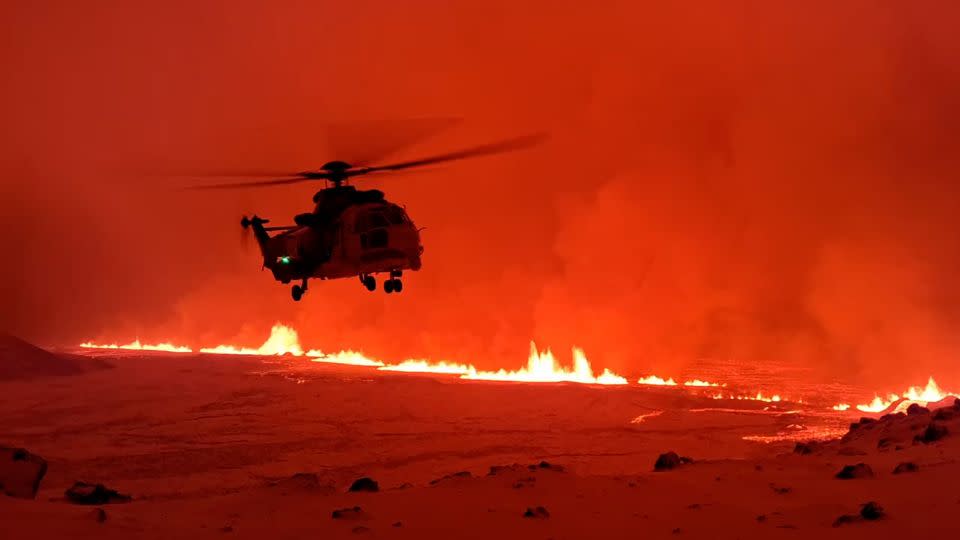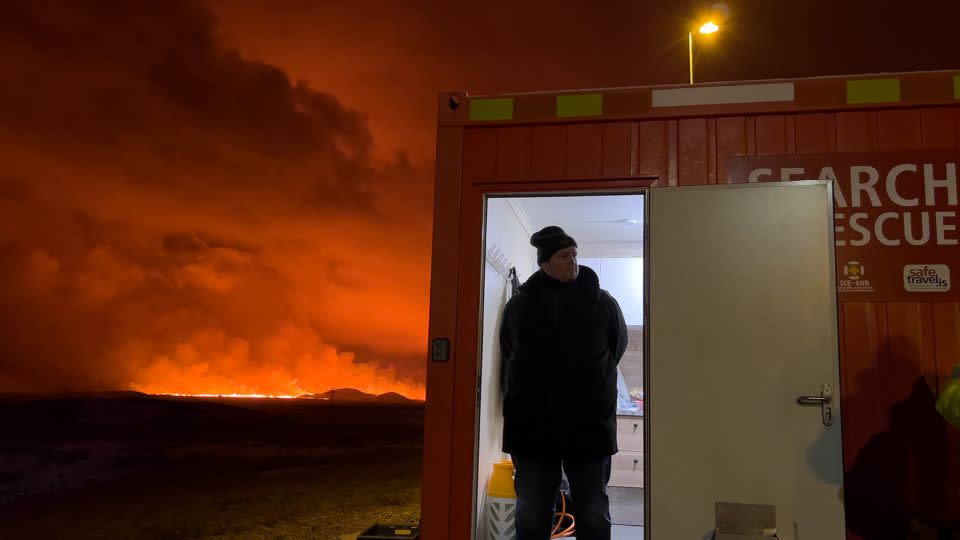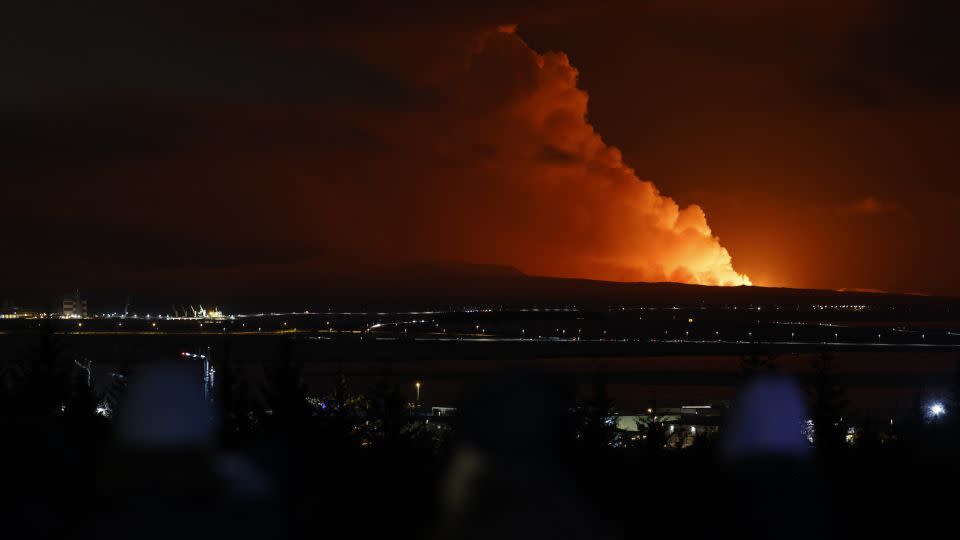A volcano erupted in Iceland on Monday, with spectacular bursts of lava and smoke lighting up the night sky after weeks of seismic activity prompted the evacuation of a nearby town.
The eruption on the Reykjanes peninsula began at around 10 pm local time, following an earthquake about an hour earlier, the Icelandic Meteorological Office said in a statement.
The office reported that the eruption was located near Hagafell, about 3 kilometers (about 2 miles) north of the town of Grindavík.
The Icelandic Coast Guard posted a video on Facebook showing one of its helicopters at the scene, hovering over a long line of glowing lava spurting from a crack in the ground. The air is covered in smoke and lit in bright colors of orange and red.

In a statement on Tuesday, the Icelandic government said the opening of the fissure is almost 4 kilometers long. It is the fourth eruption in the area since 2021 and the largest so far, the statement said.
Last month, an evacuation order was issued for Grindavík and nearby settlements that prevented residents from staying in their homes overnight as the threat of a volcanic eruption loomed, public broadcaster RÚV reported.
The town of more than 3,000 people, which at one point was in danger of being in the path of the flowing lava, is now clear of residents, RÚV reported, citing the police. It is a very popular place for tourists as it is located around 7 kilometers from the famous Blue Lagoon geothermal spa.
The eruption does not pose a threat to life, the Icelandic government said in a statement. The area is closed to all traffic, he said, and people are strongly warned not to enter the area.
Although the eruption is not expected to affect populated areas or critical infrastructure in the coming days, and is not expected to reach Grindavík any further, it is releasing “significant” poisonous gases, the Tourist Board of Iceland on Tuesday.
“People are strongly advised not to visit the site of the eruption while responders and scientists assess the situation,” the Tourism Board said.


There are currently no disruptions to flights to and from Iceland, and international flight paths remain open, the government said.
He added that the eruption is classified as a fissure eruption, which does not usually result in large explosions or significant ash production that is dispersed into the stratosphere.
In the first two hours of the eruption, hundreds of cubic meters of lava were being released per second, according to the Icelandic Meteorological Office. But the intensity of the eruption, and the level of seismic activity in the area, decreased early on Tuesday, with lava spreading laterally from all sides of the newly opened fissures.
An intense wave of hundreds of earthquakes last month triggered a state of national emergency after the country’s Civil Protection Agency said a magma tunnel was forming that could reach Grindavík.
“It is clear that we are dealing with events that we have not experienced in the Jesuits before, at least not since the eruption in Vestmannaeyjar,” the agency said, referring to the 1973 eruption that began without warning and destroyed 400 a house.


The Blue Lagoon, which draws tourists to its steaming waters, was closed for a period last month after initial signs of a possible eruption. It had just reopened to guests on Sunday – but said on Tuesday it was temporarily closing again due to the eruption.
Authorities also said in November that they were preparing a protective trench around a geothermal power plant about 7 kilometers from Grindavík that provides electricity and geothermal water to heat homes for a population of 30,000 on the peninsula.
Home to volcanoes
Iceland is located on the border of tectonic plates that are continually drifting apart, pushing North America and Eurasia apart along the Mid-Atlantic Ridge line. There are 32 active volcanoes.
Therefore, the island nation is used to volcanic eruptions, although they often occur in the desert, away from populated areas. The Bárðarbunga volcanic system located in the center of the country erupted in 2014, producing lava that covered 84 square kilometers (32 sq mi) of highlands without causing any damage to any communities.
The Fagradalsfjall volcanic system erupted in 2021 for the first time in over 6,000 years. It was not a threat to populated areas either and even became a tourist attraction as people came to watch the eruption.
Experts do not expect a volcanic eruption to cause the same level of chaos as seen in 2010 when the Eyjafjallajökull volcano erupted, as it is unlikely to involve the glacial ice that gave rise to the large ash cloud.
About 100,000 flights were canceled, affecting 2 million people, as a result of the ash spewed out by the 2010 eruption, which threatened to shut down aircraft engines and caused power outages.
“Eyjafjallajökull was an eruption through or near the glacial ice that melted and provided water that made the eruption more explosive than it would have been otherwise, so the eruption plume high and a very wide spread of ash,” Lionel Wilson, Emeritus Professor of Earth and Planetary Sciences at Lancaster University, told CNN last month.
This is a breaking news story and will be updated.
For more CNN news and newsletters create an account at CNN.com